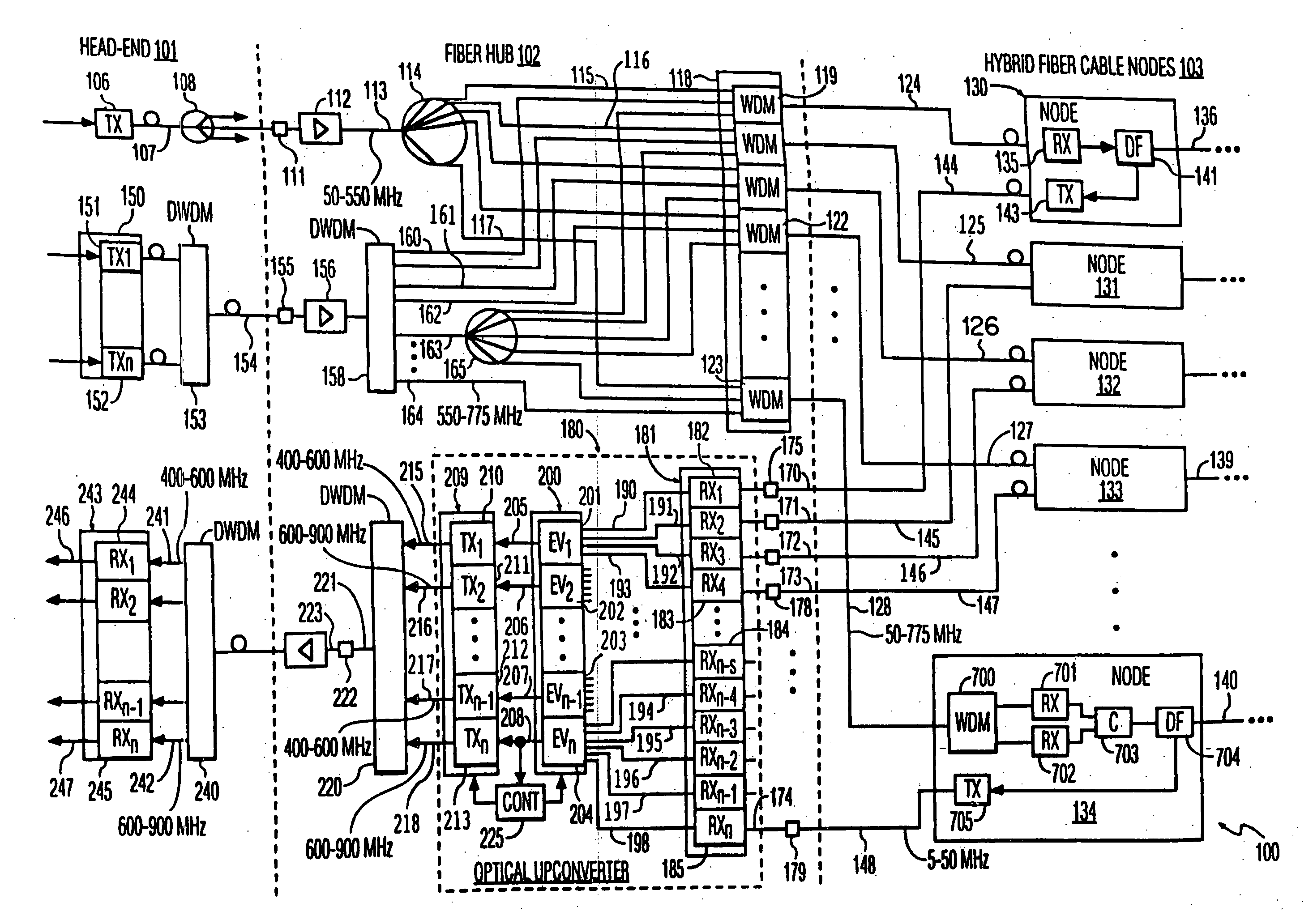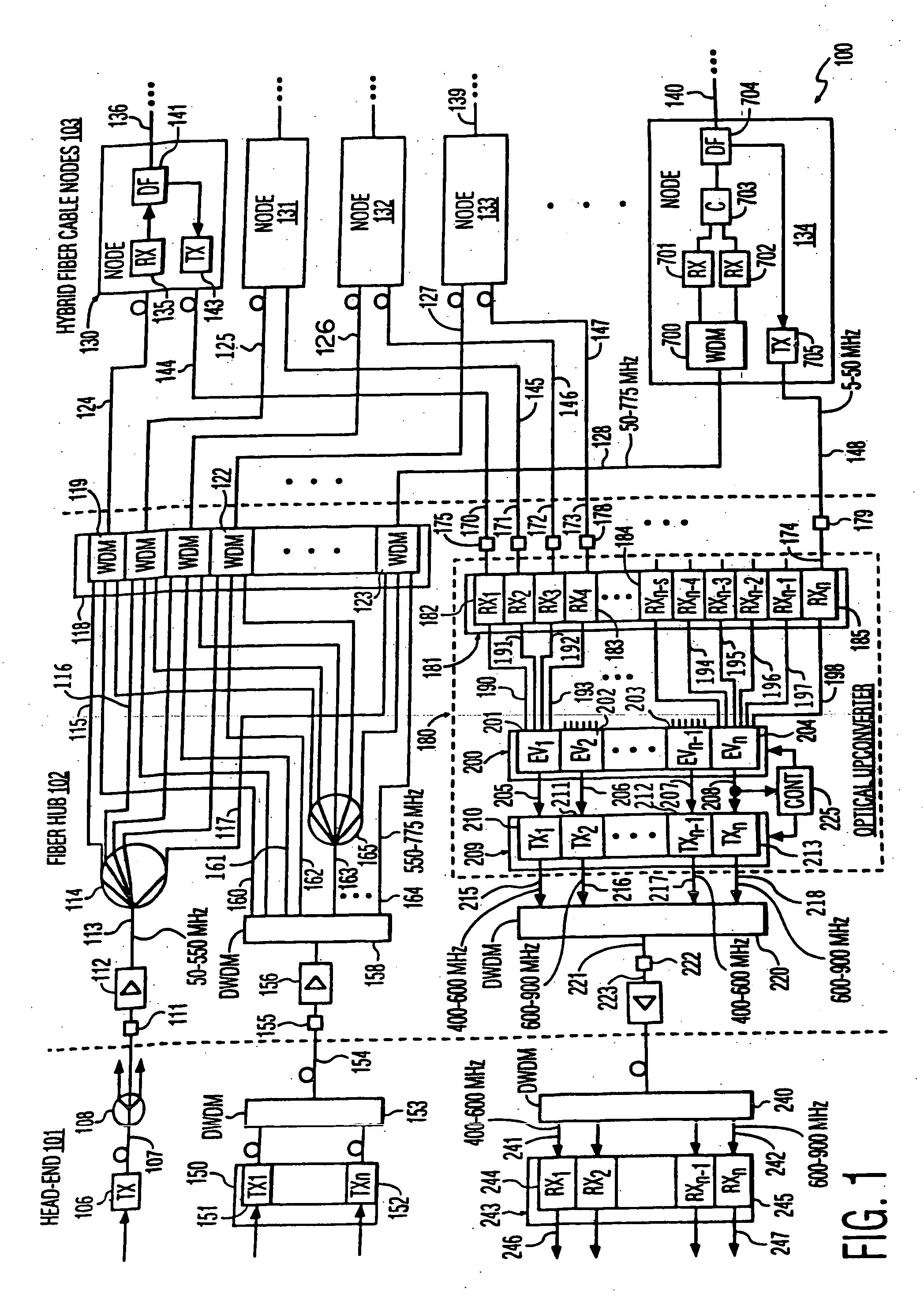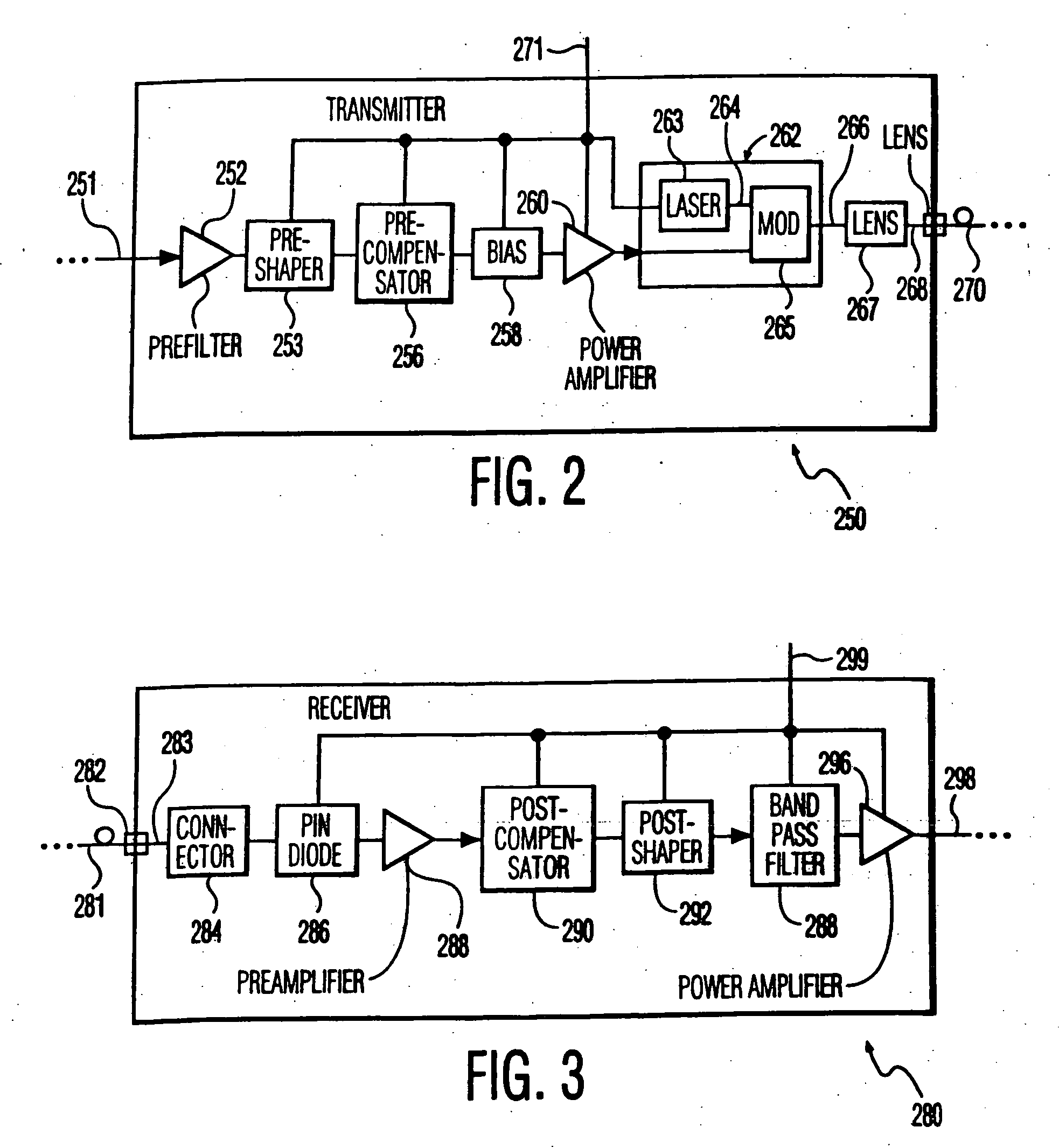DWDM CATV return system with up-converters to prevent fiber crosstalk
a technology of up-converters and fiber crosstalk, which is applied in the direction of multiplex communication, electrical equipment, electromagnetic transmission, etc., can solve the problems of complex external modulation, and inability to provide the inherent side mode rejection of multiplexing wdm, so as to minimize crosstalk and minimize the length of optical fibers. , the effect of minimizing the length of optical fibers
- Summary
- Abstract
- Description
- Claims
- Application Information
AI Technical Summary
Benefits of technology
Problems solved by technology
Method used
Image
Examples
Embodiment Construction
[0070]FIG. 1 illustrates relevant portions of a hybrid fiber cable television network of 100 the invention. At a head-end 101 (see FIG. 6), an optical transmitter 106 (see FIG. 2) converts an electronic multicarrier signal for analog television broadcast, into a optical multicarrier signal in optical fiber 107. Optical splitter 108 splits the optical signal up into a plurality of optical signals in different optical fibers for respective fiber-hubs such as fiber 113. The signal transmitted by transmitter 106 is a conventional analog television broadcast signal typical of cable television systems as described above with a carrier frequency band of nominally 50=550 MHz for NTSC and 65-550 MHz for PAL broadcasts.
[0071] Fiber 113 is connected to a fiber-hub 102 (see FIG. 7) by optical connector 111. An optical amplifier 112 amplifies the broadcast signal in fiber 113. The optical amplifier may be positioned in the head-end, intermediate between the head-end and the fiber-hub, or in the...
PUM
 Login to View More
Login to View More Abstract
Description
Claims
Application Information
 Login to View More
Login to View More - R&D
- Intellectual Property
- Life Sciences
- Materials
- Tech Scout
- Unparalleled Data Quality
- Higher Quality Content
- 60% Fewer Hallucinations
Browse by: Latest US Patents, China's latest patents, Technical Efficacy Thesaurus, Application Domain, Technology Topic, Popular Technical Reports.
© 2025 PatSnap. All rights reserved.Legal|Privacy policy|Modern Slavery Act Transparency Statement|Sitemap|About US| Contact US: help@patsnap.com



